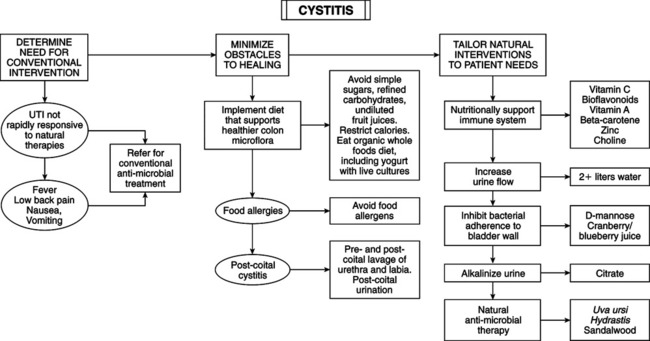The body quickly mobilizes white blood cells (WBCs) to control bacteria. • Risk factors: pregnancy (twice as frequent); sexual intercourse (nuns have 1/10 incidence); homosexual activity (men); mechanical trauma or irritation; and, most importantly, structural abnormalities of the urinary tract blocking free urine flow. • Reflux of infected urine from bladder upward infects kidneys and establishes recurrence. • Dipsticks: reagent strips are dipped into urine and removed. Parts of dipstick are impregnated with chemicals that react with specific substances in urine to produce various colors. Careful matching of dipstick color to color standard at appropriate time is essential. Dipsticks are invaluable for qualitative and rough quantitative analysis: pH, protein, glucose, ketones, bilirubin, hemoglobin, nitrite, and urobilinogen. Some dipsticks detect WBCs and bacteria (including semiquantitative cultures). Leukocyte esterase test detects WBCs (80%-90% sensitive). Many organisms reduce urine nitrate to nitrite (Citrobacter spp., E. coli, Klebsiella pneumonia, Proteus spp., Pseudomonas spp., Serratia marcescens, Shigella, Staphylococcus spp. [most]). Measuring nitrite (50% sensitive) is inexpensive and a rapid detector of bacteriuria; confirm by culture. • Microscopic examination: Perform within first hour. Place a drop of fresh urine or a drop of resuspended sediment from centrifuged fresh urine on slide, cover with cover glass, and examine with high-dry objective under reduced illumination. More than 10 bacteria per field in unstained specimen suggests bacteria count >100,000/mL. Gram stain under oil immersion objective; WBCs indicate infection. Abundant protein and/or WBC casts indicate renal involvement, commonly pyelonephritis. • Urine culture: Only quantitative cultures typically are used. Diluted urine is introduced to suitable medium and incubation. Colonies counted and multiplied by dilution factor, giving bacterial count per milliliter. Bacteriuria is significant if >100,000/mL but 1000 colonies/mL is clinically significant in the presence of UTI symptoms. Semiquantitative tests using dipsticks or glass slides coated with culture media commonly are used. Colonies are counted or appearance is compared 12-24 hours later. Recurrent or chronic infection warrants sensitivity studies. Roughly 95% of UTIs involve single bacterial species. Mixed species suggest contamination. S. epidermidis, diphtheroids, and Lactobacillus are common in distal urethra but rarely cause UTI. The most common organisms are E. coli, Proteus miribili, Klebsiella pneumonia, Enterococcus, Enterobacter aerogenes, Pseudomonas aeruginosa, Proteus spp., S. marcescens, S. epidermidis, and S. aureus.
Cystitis
GENERAL CONSIDERATIONS
Causes

DIAGNOSIS
Examining Collected Urine
![]()
Stay updated, free articles. Join our Telegram channel

Full access? Get Clinical Tree


Cystitis
